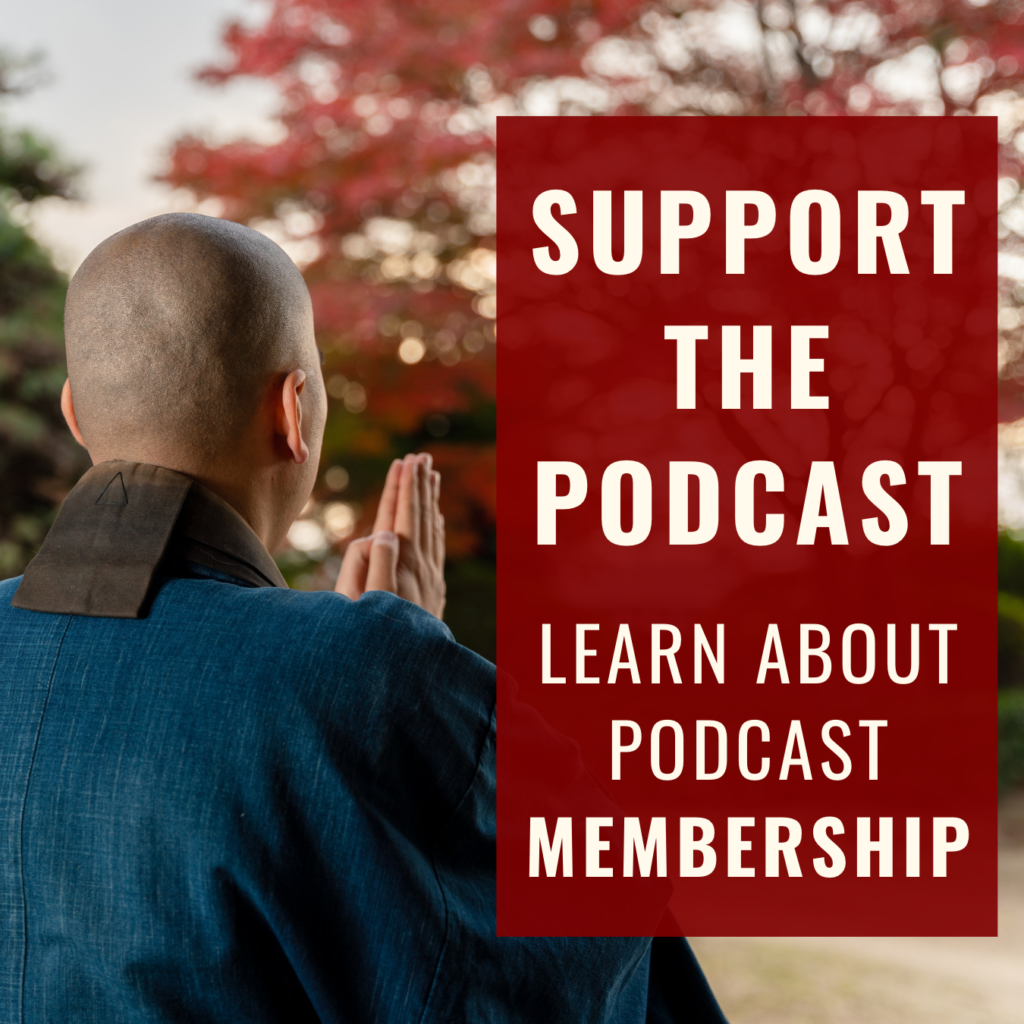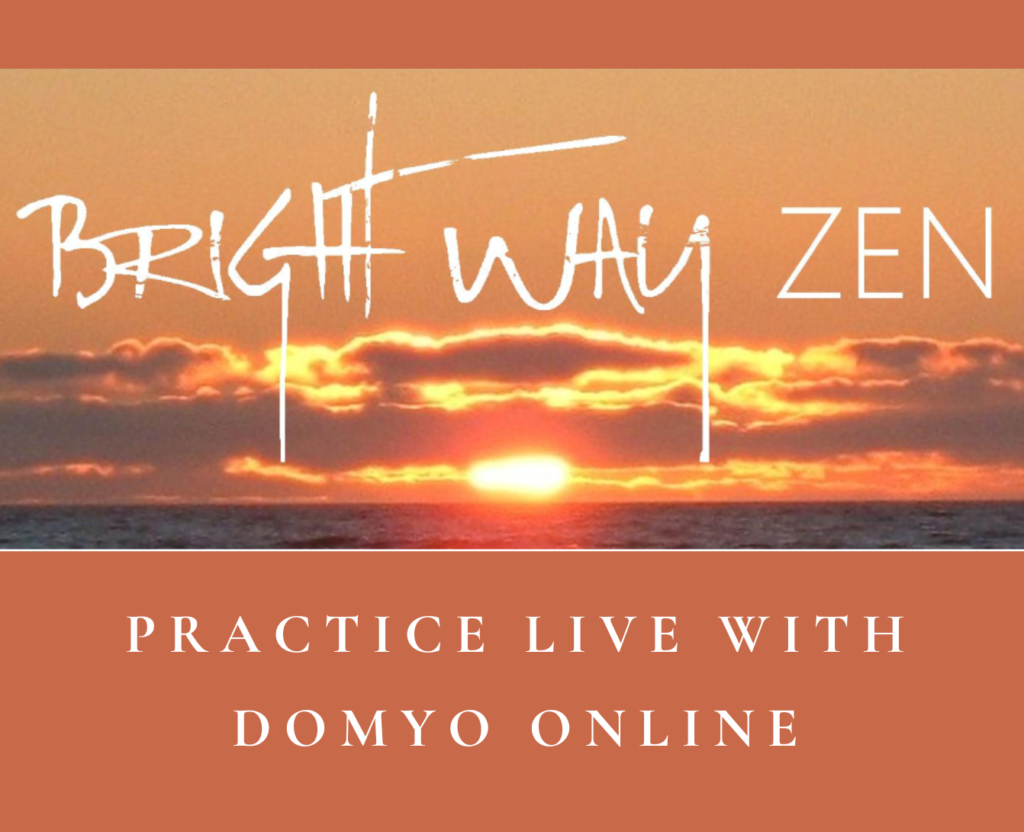In this episode I answer listener questions: How do you address the dharma and practice with young kids? If I’m trying to be mindful on work breaks, should I just go cold turkey and not look at my phone at all or maybe try a more moderate approach like eating my meal and then looking at my phone? Is it even possible to be mindful while looking at social media, checking email, etc.? And: When sitting in meditation posture, what should I do with my stomach?
This is a question-and-answer episode. If you have a question you’d like me to address on the podcast, please send it to me through the podcast website. I keep a running list, and have quite a few saved up at this point, but if you’re not impatient it doesn’t hurt to send yours! Sometimes I get ideas for full episodes from your questions as well.
Keep in mind that for Q&A episodes I make some basic notes but don’t write a full script, so my presentation is more extemporaneous and a little less considered than my regular episodes. If you have any comments on what I say, feel free to send me an email.
In response to my two-part episode on Supporting the Zen Practice of People with Physical Challenges, Claudio wrote:
I’m glad you wrote about the special abilities of some Zen practitioners. I’ve seen monks with hemiplegic conditions put on their kesa by themselves, while others with minor disabilities make a lot of noise about their difficulties. But aging is an inescapable phenomenon.
In my opinion, it’s a pity that we often wait until a Zen master reaches old age before making accommodations for practitioners with health issues. I believe that, in most cases, this insensitivity stems from ignorance— and also because the organizers are not always the same, so the needs of practitioners with disabilities often need to be re-explained or may be unintentionally overlooked.
Recently, I had a conversation with an elderly practitioner who has vision problems. He refused to attend a sesshin because it was going to be held in a rural environment, and he was afraid of falling and suffering a serious injury.
As you pointed out, many practitioners who practiced silently and with great enthusiasm when they were younger are no longer attending now that they are older—often due to sleep difficulties, urological issues, or joint problems.
Silently, in the back of our minds, many of us carry the message: “No pain, no gain.” But I wonder if that’s really true—as if the difficulties and pain of everyday life weren’t already enough of a stimulus. Numerous teaching approaches have tried to improve learning by exposing the student or practitioners to harsh situations. They have been abandoned because of the thin line that divides their use as instruments of learning from instruments of abuse.
Thank you. Bows, Claudio
Sharing the Dharma with Children
Emily: How do you address the dharma and practice with young kids?
My spouse and I are hoping to start a family soon and have been thinking about how we will raise future kids. My own Catholic upbringing made me resent the Church and I don’t want to ever force beliefs and practices onto my family. However, Zen is important to me and I see the positive impact practice has for many people. Are there any resources you would recommend about developmentally/age-appropriate Zen practice for young children? How much should they be involved; e.g. should a 5 year old sit shikantaza?
Thanks for asking… Tricky, big question, Zen communities often don’t include kids
Trying to – the ones that do, kids successfully folded into fabric of community, broaden idea of Sangha and activities including celebrations, meals, events where the disruption is okay. This is how culturally Buddhist communities do it
The choice to practice is never forced on anyone, a youth comes to it later if they want. There is exposure though, light-handed… letting the kids see, witness, take part as much as they want
Example: Parents leaving the door open when they sit, making it clear they aren’t going to be talking or responding but kids come in and sit for a while, romp around… makes a big impression
Resources? Sharing the Dharma with Children
Also check out Nat Needle’s Dharma Moon CD
Dharma Rain Zen Center – not just day care, Dharma for children. Age appropriate. Songs, socialization, stories, simple lessons. Older kids overnights, camp
Man at BWZ now who went to Dharma Camp as a youth, at recent sesshin said he realized that since that camp he had not experienced such belonging and acceptance anywhere
Mindfulness and Digital Media
Neal: I feel like the best time for me to practice mindfulness while at work is when I take breaks. My intent is to just sit and eat my meal or snack and try to do this as mindfully as possible. The problem is that I have a conflicting desire to look at my phone (I have a manual labor job and no work email account) so I can check my emails and the news, etc… I realize that when I do this I check out, making it very difficult to have a mindful state of mind.
I wonder if you have any advice: Should I just go cold turkey and not look at my phone at all or maybe try a more moderate approach like eating my meal and then looking at my phone?
Also, in a related question (if you have time) is it even possible to be mindful while looking at social media, checking email, etc…
Ha – each of us has to experiment and find out what works. Helpful: No executive I… what is skillful? What will you really do, keep doing? Probably best to have mindful stretches and then relax
Manual labor… mindful moments rather than a state constant striving for a certain state of mind
When using digital media or any other activity engaging the mind – can we be mindful? Certainly not in the same way. Maybe: Undivided? Can check in – are we anticipating (finishing, something else), resistance or dislike, impatience, sense we shouldn’t be doing this? This is where making deals with yourself – e.g. just eat silently then ______… can be good; helps us be more undivided as we do an mentally engaging activity.
Correcting a Big Posture Mistake
Michael: I listened to your two-part zazen instruction and have only one basic question. What do I do with my stomach? I know it sounds funny but over many years and many different types of meditation, while keeping my back straight I can’t figure out what to do about the belly. It feels like I want to suck it in slightly to keep from slouching but there is a tension to that. Do I want to breathe from the diaphragm for each breath? That would take care of the belly in a sense.
Couple years ago I realized there was a critical error in how I had learned meditation posture and how I’d been teaching it
I’m not saying Michael is making this mistake, it actually sounds like he’s not, but in addressing his question I wanted to bring this up as well
This is how I learned the posture and taught it (maybe I just heard wrong): Sit upright, knees slightly lower than hips, pelvis tilted forward a little, slight concave curve in lower back, breath into belly.
Others may disagree, but in searching for a remedy for my back pain, discovered a program I went through that revolutionized my approach to posture and that has relieved a lot of my pain. Difficult to relearn all one’s habits, but still, I know what’s wrong when I start feeling pain
In fact, as we sit (chair or cushion), we want to slightly rotate the top of our pelvis back, and the bottom of it forward – exactly the opposite of the position I thought we were looking for. There should be no concave curve in your lower back unless that’s just the structure of your body – no extra curvature.
This position of the pelvis should be maintained with core muscles, not through any tension in the back or even tightening the outer abdominal muscles. Your core muscles can hold your posture for much longer without tiring out. As part of this alignment, the bottom of your rib cage should not be jutting out.
When your core muscles are engaged and you breathe in, you should feel increased pressure and a sense of expansion throughout your entire lower body. Your belly shouldn’t be moving in and out. It could be that Michael’s description of breathing from the diaphragm is the same thing as what I’m talking about, I don’t know.
It helps to imagine breathing into your back as maintain this activation of your deep core muscles. Ideally, your spine is supported by your core in a nice, straight, enlongated position. This is a sharp contrast to an “S” shape where your butt slightly sticks out in back and the belly sticks out in front; this position places a lot of pressure on your lower spine.
Of course, a slouch is no good for meditation either, where your shoulders are hunched over, your spines curves out in back, and the pelvis is tilted too far back.
If you have back or hip issues and want to explore all of this more fully, you might want to check out Core Balance Training, the program I used. (I’m not getting paid by them, I just really found the program helpful, and it’s something you can access online. The website might seem a little like it’s trying to sell you something that won’t be worth it, but watch the free 15-minute masterclass. It’s legit, if not cheap.)
Photo Credit
Image by vined mind from Pixabay








